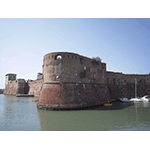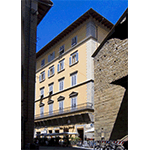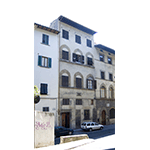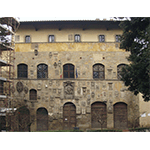Francesco Redi in Tuscany

A highly versatile personality, Francesco Redi was one of the leading figures in the birth of modern science. Born in Arezzo in 1626, he played a fundamental role in the history of medicine and experimental biology, while at the same time distinguishing himself in the literary sphere, a discipline in which he was a sensitive, refined artist. To the corpus of his works, and in particular to the vast correspondence conserved in the libraries of Arezzo and Florence, numerous studies have been dedicated recently, showing his importance in the Italian and European cultural panorama of the 17th century.

The iconography of Redi
Of the "skinny and always chilly Redi", as he jokingly called himself, several coeval portraits exist. Important among these are the painting belonging to the Arezzo Brotherhood of Laymen, the copper matrix from which was made an engraving appearing in many of Redi's works, now in the possession of the Petrarch Academy of Literature, Arts and Science, and some medals now conserved at the State Museum of Medieval and Modern Art. The splendid bust recently attributed to Giovan Battista Foggini, which adorns Redi's monumental cenotaph in the Arezzo Cathedral, the portrait in the so-called Jovian collection of the Uffizi Gallery in Florence, the sculpture displayed in the outer Loggia of the same museum and, lastly, the statue in the courtyard of Palazzo De Larderel in Livorno are instead all posthumous.
-
 Accademia Petrarca di Lettere Arti e Scienze di Arezzo [Petrarch Academy of Art, Literature and Science, Arezzo]
Accademia Petrarca di Lettere Arti e Scienze di Arezzo [Petrarch Academy of Art, Literature and Science, Arezzo] -
 Arezzo Cathedral
Arezzo Cathedral -
 Galleria degli Uffizi [Uffizi Gallery]
Galleria degli Uffizi [Uffizi Gallery] -
 Museo Statale d'Arte Medievale e Moderna [State Museum of Medieval and Modern Art]
Museo Statale d'Arte Medievale e Moderna [State Museum of Medieval and Modern Art] -
 Palazzo De Larderel
Palazzo De Larderel -
 Palazzo della Fraternita dei Laici
Palazzo della Fraternita dei Laici -
 The Uffizi Loggia
The Uffizi Loggia -
 Francesco Redi
Francesco Redi -
 Francesco Redi. Scienziato e poeta alla Corte dei Medici (italian only)
Francesco Redi. Scienziato e poeta alla Corte dei Medici (italian only)

Redi as Court scientist
Like other scientists of the times, Francesco Redi spent much of his life linked to the Tuscan reigning house, soon enjoying a privileged position in the Court as chief physician to the Grand Dukes Ferdinand II and Cosimo III de' Medici, a position he held from 1666 to the year of his death. As such, the scientist from Arezzo followed the court in its seasonal moves, sojourning repeatedly in the old Fortress of Livorno, the Royal Palace of Pisa and the numerous grand-ducal villas scattered over the territories of today's Provinces of Florence and of Prato. It was in these seats, as well as in the royal residence of the Pitti Palace, that Redi carried out his experimental research, efficaciously applying the principles of the Academy of Cimento, the first scientific association in Europe, of which Redi had been the promoter. In addition to the famous confutation of the theory of spontaneous generation and the publication of his biological tetralogy, Redi also took an interest in questions of chemistry and physics as proven, for example, by his interest in the phenomenon of "drops of glass" and his analysis of the thermal waters of Montecatini Terme.
-
 Fortezza Vecchia di Livorno [Old Fortress of Livorno]
Fortezza Vecchia di Livorno [Old Fortress of Livorno] -
 Medici Villa 'Ambra'
Medici Villa 'Ambra' -
 Medici Villa 'La Ferdinanda'
Medici Villa 'La Ferdinanda' -
 Medici Villa L'Ambrogiana
Medici Villa L'Ambrogiana -
 Museo Nazionale di Palazzo Reale [National Museum of the Royal Palace]
Museo Nazionale di Palazzo Reale [National Museum of the Royal Palace] -
 Palazzo Pitti [The Pitti Palace]
Palazzo Pitti [The Pitti Palace] -
 Thermal Baths of Montecatini
Thermal Baths of Montecatini -
 Redi: Esperienze intorno alla generazione degl'insetti
Redi: Esperienze intorno alla generazione degl'insetti
-
 Redi: Lettera di Francesco Redi ... sopra alcune opposizioni fatte alle sue Osservazioni intorno alle vipere
Redi: Lettera di Francesco Redi ... sopra alcune opposizioni fatte alle sue Osservazioni intorno alle vipere
-
 Redi: Osservazioni di Francesco Redi ... intorno agli animali viventi che si trovano negli animali viventi
Redi: Osservazioni di Francesco Redi ... intorno agli animali viventi che si trovano negli animali viventi
-
 Redi: Osservazioni intorno alle vipere fatte da Francesco Redi
Redi: Osservazioni intorno alle vipere fatte da Francesco Redi

Redi the man of letters
An intellectual of extraordinary versatility, Redi was also a refined man of letters and poet. Elected member of the Accademia della Crusca in 1655 and Arciconsolo from 1678 to 1690, he contributed to compiling the third edition of the Vocabolario (1691), in which he also introduced some famous falsifications. Public Reader in the Tuscan language at the "Studio" (university) of Florence in 1665, he conducted research starting in 1670 for a Vocabolario aretino [dictionary of the Arezzo dialect], discovered among his manuscripts only in the last century. Famous among his poetic compositions is the dithyrambic Bacco in Toscana [Bacchus in Tuscany], a light, sophisticated hymn of praise to the region's wines.

Redi's residences
Except for the traditional sojourns of "villeggiatura" in the entourage of the grand-ducal court, Francesco Redi spent almost his entire life in Florence, residing there up to 1672 in the houses, of uncertain identification, that his father had rented "in Via Maggio", "in the street that goes to S. Spirito behind Via Maggio beside the garden of the Signori Magalotti" and "in the vicinity of Canto a Soldani opposite the bell tower of San Remigio on the street-corner". After the death of his mother and the departure of his father for Arezzo, Redi decided to move to Via de' Bardi, where still today a plate commemorating the illustrious citizen can be seen. But he must have retained important ties to his home town, considering that he decided to concentrate his investments within the Arezzo district, as demonstrated by the Villa degli Orti. At Arezzo, moreover, was the real estate purchased by his father Gregorio, including the now lost Tower of Poggio del Sole, and the possessions acquired by the family through marriage; among these was Palazzo Redi, the seat of today's Central Pharmacy.

Redi's bibliographical legacy
Thanks to Redi's special attachment to his home town, rare library collections of scientific and historical-literary character are now conserved at the Petrarch Academy of Literature, Arts and Science and the City of Arezzo Library Institution. A passionate bibliophile, Redi was generously active, in fact, in favour of some of the city's institutions, such as the centuries-old Brotherhood of Laymen and the newborn College of the Jesuits, regularly enriching his wealth of books, which he then left to these institutions. Interesting documents on the Redi 's economy and family life also went to enrich the collections of the State Archives of Arezzo. Some fourteenth-fifteenth century manuscripts belonging to the scientist and part of his abundant correspondence went instead to the Laurentian Library of Florence, thanks to the legacy of Balì Francesco Saverio, one of his direct descendants. Other documents, some still unpublished, were recuperated, after numerous changes of ownership, by the Marucellian Library, the Riccardian Library and the National Central Library of Florence.
-
 Archivio di Stato di Arezzo [Arezzo State Archives]
Archivio di Stato di Arezzo [Arezzo State Archives] -
 Biblioteca Marucelliana [Marucelliana Library]
Biblioteca Marucelliana [Marucelliana Library] -
 Biblioteca Nazionale Centrale di Firenze BNCF [Central National Library of Florence]
Biblioteca Nazionale Centrale di Firenze BNCF [Central National Library of Florence] -
 Biblioteca Riccardiana [Riccardian Library]
Biblioteca Riccardiana [Riccardian Library] -
 Istituzione Biblioteca Città di Arezzo [City of Arezzo Library Institution]
Istituzione Biblioteca Città di Arezzo [City of Arezzo Library Institution]
****************************
Texts by Elena Fani
English translation by Catherine Frost
Last update 05/mar/2008


